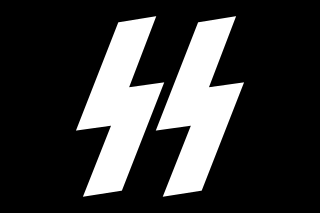Top Qs
Timeline
Chat
Perspective
Sowilō (rune)
Runic alphabet letter From Wikipedia, the free encyclopedia
Remove ads
Sowilo (*sōwilō), meaning "sun", is the reconstructed Proto-Germanic language name of the s-rune (ᛊ, ᛋ).
This article needs additional citations for verification. (September 2010) |
Look up Sowilō in Wiktionary, the free dictionary.
The letter is a direct adoption of Old Italic (Etruscan or Latin) s (𐌔), ultimately from Greek sigma (Σ). It is present in the earliest inscriptions of the 2nd to 3rd century (Vimose, Kovel).
The name is attested for the same rune in all three Rune Poems. It appears as Old Norse and Old Icelandic Sól and as Old English Sigel.
Remove ads
Name
Look up Reconstruction:Proto-Germanic/sōwulō in Wiktionary, the free dictionary.
Look up Reconstruction:Proto-Germanic/sunnǭ in Wiktionary, the free dictionary.
The Germanic words for "Sun" have the peculiarity of alternating between -l- and -n- stems, Proto-Germanic *sunnon (Old English sunne, Old Norse, Old Saxon and Old High German sunna) vs. *sōwilō or *sōwulō (Old Norse sól, Gothic sauil, also Old High German forms such as suhil). This continues a Proto-Indo-European alternation *suwen- vs. *sewol- (Avestan xᵛə̄ṇg vs. Latin sōl, Greek helios, Sanskrit surya, Welsh haul, Breton heol, Old Irish suil "eye"), a remnant of an archaic heteroclitic declension pattern that remained productive only in the Anatolian languages.[citation needed]
The Old English name of the rune, written sigel (pronounced /ˈsɪ.jel/) is most often explained as a remnant of an otherwise extinct l-stem variant of the word for "Sun" (meaning that the spelling with g is unetymological),[1] but alternative suggestions have been put forward,[2][3][4] such as deriving it from Latin sigillum (assuming that the y is the unetymological element instead).[5]
Remove ads
Development and variants

The Elder Futhark s rune is attested in main two variants, a "Σ shape" (four strokes), more prevalent in earlier (3rd to 5th century) inscriptions (e.g. Kylver stone), and an "S shape" (three strokes), more prevalent in later (5th to 7th century) inscriptions (e.g. Golden horns of Gallehus, Seeland-II-C).
The Younger Futhark Sol and the Anglo-Saxon futhorc Sigel runes are identical in shape, a rotated version of the later Elder Futhark rune, with the middle stroke slanting upwards, and the initial and final strokes vertical.[citation needed]
The Anglo-Saxon runes developed a variant shape (ᚴ), called the "bookhand" s rune because it is probably inspired by the long s (ſ) in Insular script. This variant form is used in the futhorc given on the Seax of Beagnoth.[citation needed]
Remove ads
Rune poems
- Elder Futhark Sowilo rune, earlier ("Σ") variant.
- Elder Futhark Sowilo rune, later ("S") variant.
- Anglo-Saxon Sigel / Younger Futhark Sol rune
- Anglo-Saxon "bookhand s"
Relationship with Armanen runes

Guido von List used Sowilō as the basis for the Armanen sig rune, also known as the "Siegrune". Unlike the rune used historically by the Germanic peoples, the name of which translates to "sun", he associated his new rune with "victory" (German Sieg) based on similarity in sound with the name of the Anglo-Frisian rune sigel.[citation needed]
The Armanen sig rune was adapted into the emblem of the SS in 1933 by Walter Heck.[7] Heck's design consisted of two sig runes drawn side by side like lightning bolts and was adopted by all branches of the SS.[8][9]
Remove ads
See also
- The Lindholm "amulet" that bears the word Sawilagaz which is interpreted as "the one of the Sun"
- Rune poem
- Sigelwara Land
- Sól (Germanic mythology)
- Opel, the logo for which resembles the Sowilō rune
References
Sources
Further reading
Wikiwand - on
Seamless Wikipedia browsing. On steroids.
Remove ads

